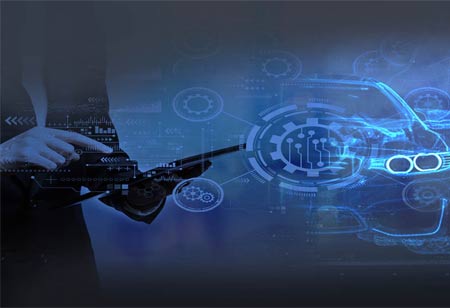THANK YOU FOR SUBSCRIBING
THANK YOU FOR SUBSCRIBING
Be first to read the latest tech news, Industry Leader's Insights, and CIO interviews of medium and large enterprises exclusively from Auto Tech Outlook

By
Auto Tech Outlook | Monday, January 20, 2025
Stay ahead of the industry with exclusive feature stories on the top companies, expert insights and the latest news delivered straight to your inbox. Subscribe today.
Robotics continues to drive innovation and operational excellence in the automotive industry. By fostering safer, smarter, and more efficient production processes, robotics is paving the way for a more sustainable future in automotive manufacturing.
FREMONT, CA: The automotive industry has been a prime example of technical evolution and innovation over decades. At the forefront of these developments today is the integration of robotics. From assembly lines to quality checks, robotics is reshaping modern automotive operations, making them more efficient, precise, and adaptable.
Robotics plays a key role in automating various processes in the automotive sector. Whether welding, painting, or assembling parts, robots perform tasks that were once labour-intensive and time-consuming. These robots enhance production speed while maintaining consistency and precision that humans might struggle to achieve over long shifts. Furthermore, automation allows companies to quickly adapt to evolving manufacturing demands without compromising quality.
Applications of Robotics in Automotive Operations
Integrating robotics in automotive operations has transformed the industry, enhancing productivity, safety, and quality. On assembly lines, robots are instrumental in automating tasks such as screwing, glueing, and inserting components. Collaborative robots, known as “cobots,” work alongside human operators to handle precision-driven tasks and lift heavy loads, fostering improved efficiency and a safer working environment.
Robotics ensures the precision and consistency required for automotive production in processes like welding and painting. Robotic welders with advanced sensors deliver flawless welds, while robotic painters provide uniform coatings, reducing material waste and ensuring compliance with environmental regulations. These applications enhance operational accuracy while mitigating the risks associated with hazardous environments.
Robotics also plays a critical role in quality assurance. With artificial intelligence (AI) and cutting-edge sensors, modern robots conduct real-time inspections with microscopic precision. This ensures that every vehicle leaving the production line meets rigorous quality standards, minimising defects and enhancing customer satisfaction. Furthermore, autonomous guided vehicles (AGVs) are transforming factory material handling. These robots efficiently transport materials and components across the production floor, reducing downtime and minimising risks associated with manual transportation.
Recent Innovations in Robotics for Automotive Operations
AI-driven robots can now learn from data and continuously improve their performance. These systems enable predictive maintenance and real-time adjustments, ensuring smoother and more reliable production processes.
Cloud robotics has further expanded robotic systems' capabilities. Robots across multiple factories can access shared data by integrating with cloud computing, enabling centralised monitoring and synchronised production schedules. This connectivity enhances supply chain efficiency and supports greater operational coordination.
Advancements in safety mechanisms have also fostered more seamless human-robot collaboration. Improved sensors and smarter programming allow robots to work closely with human operators. This partnership ensures that tasks requiring human oversight and robotic precision are executed effectively, merging the best of both worlds.
Benefits of Robotics in Automotive Operations
The adoption of robotics in the automotive sector provides a multitude of benefits. Despite the high initial investment, robotic systems deliver significant cost savings over time by increasing productivity and reducing errors. They also enhance workplace safety by taking on hazardous tasks and minimising the risk of injuries.
Automation ensures consistent quality, enabling manufacturers to maintain uniform vehicle standards. This reliability strengthens brand reputation and improves customer satisfaction. Additionally, robotic systems allow for scalable operations, giving companies the flexibility to adapt quickly to changing market demands.
As the automotive industry shifts toward electric and autonomous vehicles, robotics will continue to play a pivotal role. Advanced robots will facilitate the production of EV components, such as batteries, and streamline processes for self-driving technologies. Integrating robotics with AI and IoT (Internet of Things) will make factories smarter and more adaptive.
The role of robotics in modern automotive operations is crucial and ever-growing. Robotics is driving the automotive industry toward a more productive and sustainable future through automation, precision, and innovation. As technology advances, the synergy between robots and humans will unlock new possibilities, transforming how vehicles are manufactured and paving the way for groundbreaking automotive innovations.
 Copyright © 2025 AutoTech Outlook. All Rights Reserved | Privacy Policy | Subscribe | Sitemap | About us | Feedback Policy | Editorial Policy
Copyright © 2025 AutoTech Outlook. All Rights Reserved | Privacy Policy | Subscribe | Sitemap | About us | Feedback Policy | Editorial Policy 



